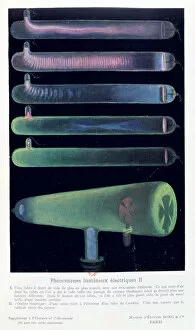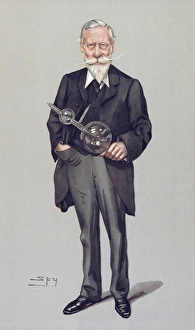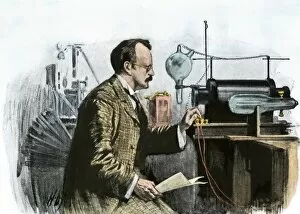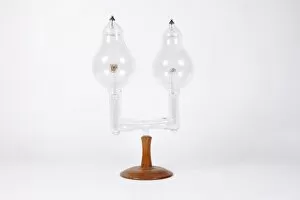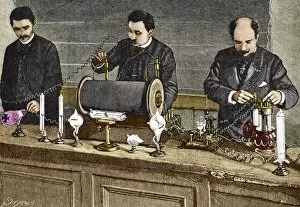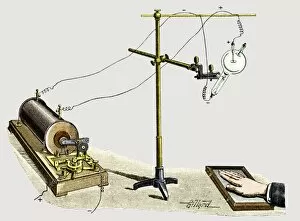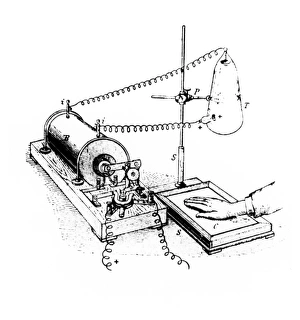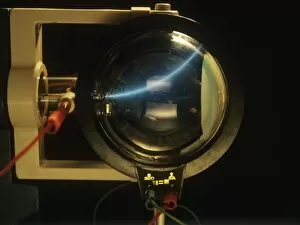Crookes Tube Collection
The Crookes tube, a remarkable invention of the 19th century, revolutionized our understanding of electrical luminosity
All Professionally Made to Order for Quick Shipping
The Crookes tube, a remarkable invention of the 19th century, revolutionized our understanding of electrical luminosity. Developed by Sir William Crookes, a British chemist and physicist, this vacuum tube became the cornerstone of radiant matter physics. In this captivating black and white photo from 1903, we see Sir William Crookes standing proudly next to his groundbreaking creation. The PSCI2A-00014 image captures the essence of scientific exploration during that era. The mesmerizing glow emitted by the 19th-century Crookes tubes was nothing short of extraordinary. These tubes were instrumental in early radiography experiments, paving the way for advancements in medical imaging techniques. One such experiment involved Roentgen's X-ray apparatus skillfully capturing an image of a hand. As we delve into the world of these enchanting devices, it becomes evident how they bridged science and art. The intricate design and craftsmanship behind each Crookes tube showcase both technical ingenuity and aesthetic beauty. Through their research with these tubes, scientists like Sir William Crookes unraveled mysteries surrounding radiant matter physics. Their discoveries laid the foundation for future breakthroughs in electricity and light phenomena. Today, as we marvel at modern technology's achievements, let us not forget those who paved the way before us. The humble yet profound invention known as the Crookes tube continues to inspire generations with its contribution to our understanding of electrical luminosity - forever etching its name in history books as a symbol of scientific progress.

